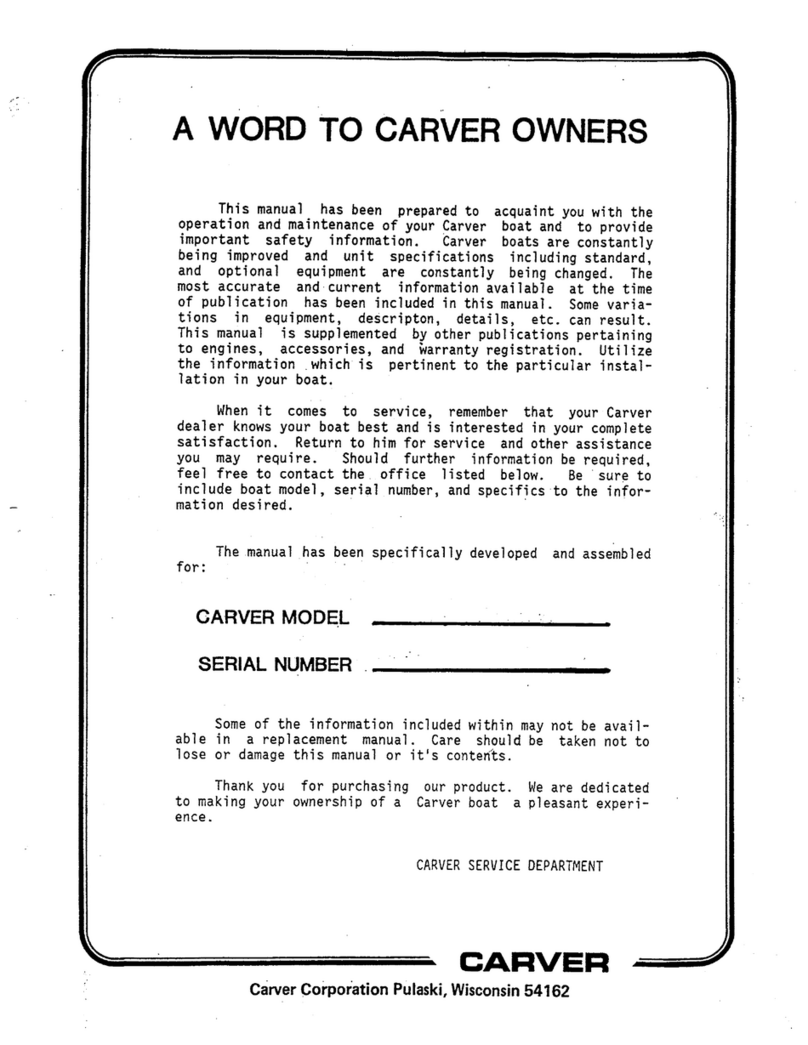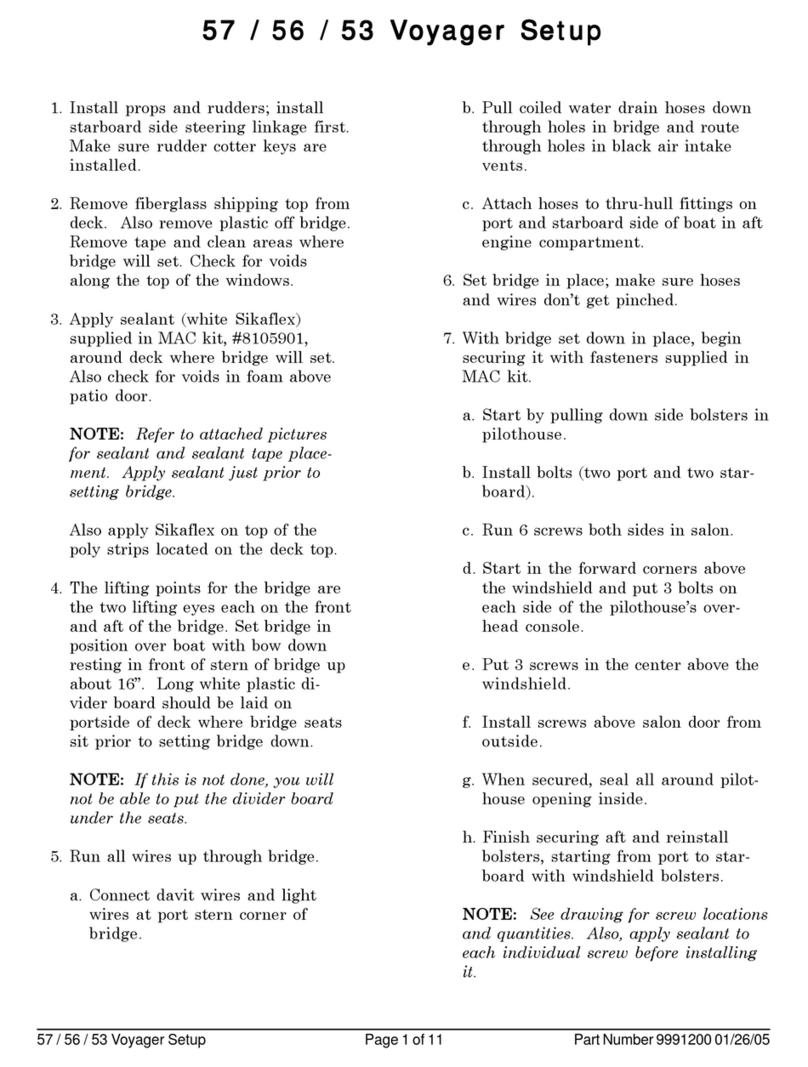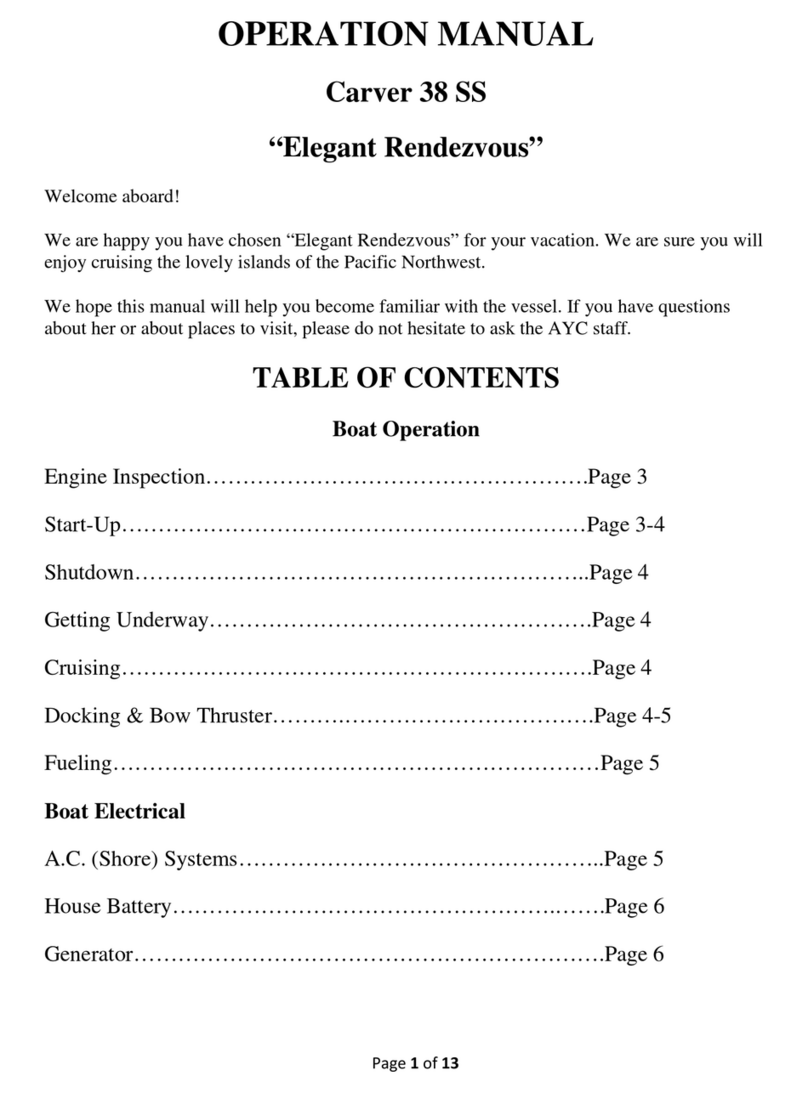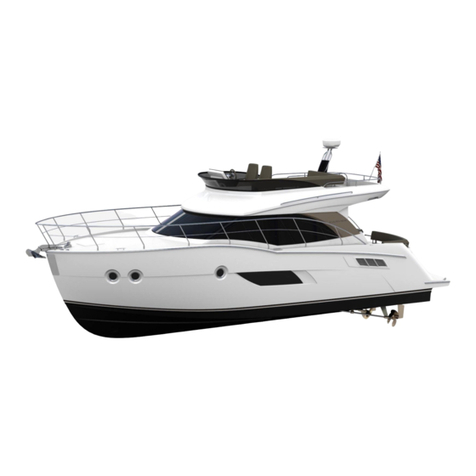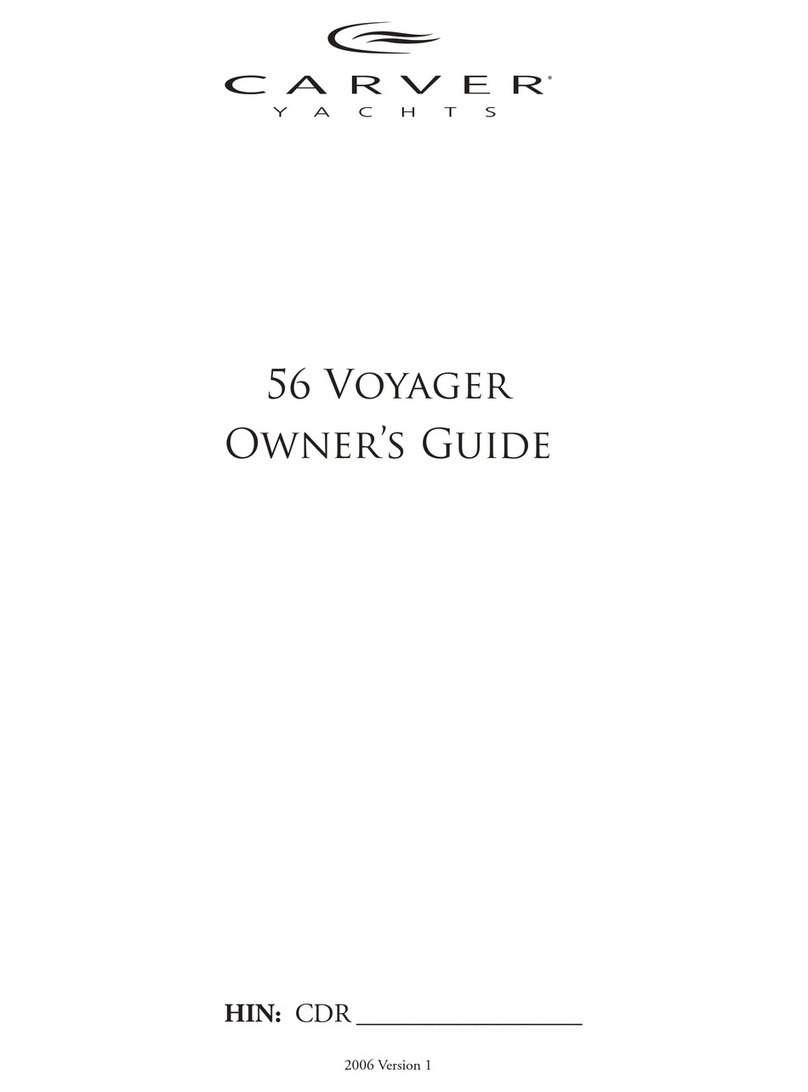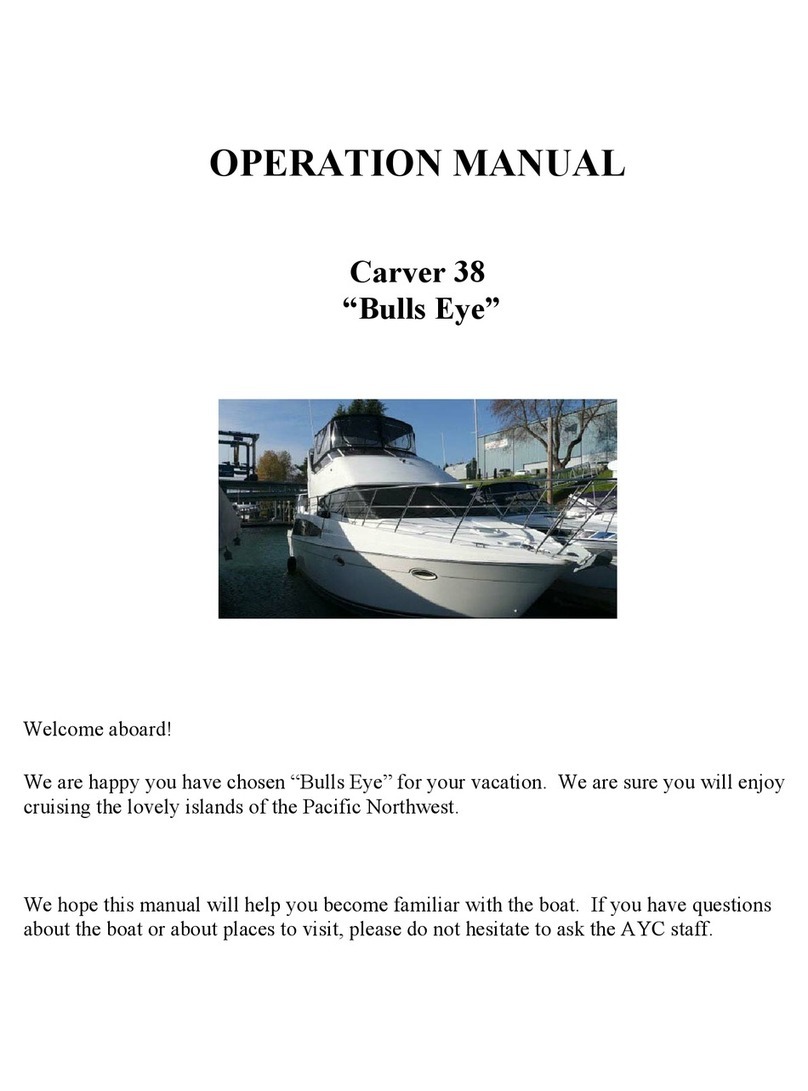H-3A Garboard Drain ........................................................................................................
H1
H-3B Bilge Pumps .............................,............................................................................... H2
H-3C Bilge Compartment Drainage.................................................................................... H2
SECTION I • INTERIOR EQUIPMENT
i-1
HEADS
1-1
A Self-Contained Head................................................................................................
11
1-1
B Manually-Operated Head ..........................................................................................
11
1-1
C Electric Head ...............................................................;............................................
11
1-1
D Crown Electric Head ................................................................................................
11
1-1
E Auxiliary Holding Tank ..............................................................................................
11
1-2
REFRIGERATORS ........................................................................................................
12
1-3
STOVES ........................................................................................................................
12
1-3A
Alcohol Stoves ........................................................................................................
12
1-3B
Alcohol/Electric Stoves ...........................:................................................................
12
1-4
STEREO EQUIPMENT ..................................................................................................
12
1-5
AIR CONDITIONING ......................................................................................................
12
SECTION J • EXTERIOR &
~AFETY
EQUIPMENT
J-1
SPOTLIGHT ..................................................................................................................
J1
J-S TRIM TABS ....................................................................................................................
J1
J-SA Operation .................................................................................................................
J1
J-SB Correct Usage ............................................................................:.............................
J2
J-B
RAILS & DECK HARDWARE ........................................................................................ J2
J-2 COMPASS ....................................................................................................................
J1
J-3 ENGINE HOUR METER .................................................................................................
J1
J-4 DEPTH SOUNDERS ......................................................................................................
J1
J·4A 21,
23
&
2S
Foot Models ...........................................................................................
J1
J·4B 27 Foot Models ........................................................................................................
J1
J-7 SWIM PLATFORMS ...................................................................................................... J3
J-8 BOW PULPITS .............................................................................................................. J3
J-9 FIRE EXTINGUISHER SYSTEM .................................................................................... J3
SECTION K • SEATING &WEATHER COVERS
K-1
V-BERTH FILLER CUSHIONS ......................................................................................
K1
K-S
DRAPERIES & WINDOW COVERS .............................................................................. K2
K-B
CARVER WEATHER COVERS ......................................................................................
K2
K·2
DINETIE
BERTHS .......................................................................................................
,:
K1
K-3 CONVERTIBLE STERN SEATS ....................................................................................
K1
K-4 UPHOLSTERY MAINTENANCE .....................................................................................
K1
K-4A Exterior Upholstery ..................................................................................................
K1
K-4B Interior Upholstery ....................................................................................................
K1
K-4C Upholstery Replacement ...........................................................................................
K1
K-4D Exterior Carpets .........................................;............................................................
K1
K-4E Interior Carpets ........................................................................................................
K1
K-7 WINTER STORAGE COVERS .....................................'.......................................,.........
K3
SECTION L • FIBERGLASS
HULL
&COMPONENTS
L-1
GENERAL ...................................................................................................................... L1
L-S
HULL SUPPORT .....................................................:......................................................
L2
L-B
FIBERGLASS REPAIRS ........:....................................................................................... L2
L-2 FIBERGLASS COMPONENT CONSTRUCTION ...:........................................................ L1
L-3 ADDITIONAL EQUIPMENT INSTALLATION
..
;.............
~
................................................. L1
L-4 FIBERGLASS CARE .........................
~........
.................................................................... L1
OMSB
CARVER
3
"------------
-~~---.,,-~-
.~.----~-
..
~--""-.-",,"-----.,,--
---



